|
The following 21-minute video is by YouTuber and Synthesizer Performer, Mylar Melodies.
I realize I Posted a "Logic Function" entry a few days ago but, although it's a good article, it was all text, images and a 1-minute video. Some of us learn better with "videos". So in the following video, Mylar Melodies does a good job of explaining Logic Modules while actually "showing" you how he accomplishes each task… and, this video provides a different perspective on this sometimes-confusing subject. Here's the link: https://www.youtube.com/watch?v=DulDZSsMUpY
0 Comments
The following link will take you to the Sonic State website. On this particular page, you'll find a 36-minute video where legendary music-gear Reviewer, Nick Batt, interviews a synth hobbiest who has collected a few, very old, and interesting, Synthesizers.
Even if you're not into 20 or 40-year old Synths, this Tour might help you recognize some of the sounds presented in today's modern Synths. Here's the link: https://sonicstate.com/news/2019/10/21/studio-tour-ham-plazas-synth-collection/ (1/18/21)
Today begins “NAMM 2021”. NAMM is the “National Association of Music Merchants”. Each year they hold two Expos — “Winter NAMM” in January and “Summer NAMM” around June or July. The Winter version is typically held in California and the Summer version in Tennessee. Each Event occupies the Meeting Rooms of several very large Hotels. This year’s “Winter NAMM”, however, is “virtual” / online-only. Both NAMM Events are aimed at Music Manufacturers and Music Retailers. This particular NAMM-happening is also open to the General Public and it’s free. Simply visit the NAMM website (link below) and Register. Music gear manufacturers should be releasing new products all this week and will probably be dripped-out over the next few days. Today, though, two Synthesizers caught my attention. Both are from Korg:
Here’s the link to an article about the new version: https://www.synthtopia.com/content/2021/01/17/korg-reissues-classic-minikorg-700-synthesizer/ The other Synthesizer that caught my attention today is the “ARP 2600 M”. Although I’m a Drummer, I also consider myself a “Synthesist”. I enjoy creating all types of sounds and I was attracted to Synthesizers shortly after they were widely available to the General Public, in the early 70s. I like exploring all the possibilities a Synthesizer has to offer and, even though the miniKORG 700 was my first synth, I quickly discovered its limitations. As I started thinking about replacing it, I kept hearing a fantasticly-rich sound, in the many Rock, Heavy Metal and Progressive Rock songs I listened to every day. Doing some research (with no “Internet” at that time), I learned that this wonderful Synthesizer was the “MiniMoog”. So I saved up my money once again, sold the miniKORG 700 and purchased a MiniMoog. At that time, it cost me $1,495. It took me quite a bit longer to feel the limitations of the MiniMoog but its sounds were some of the richest I have ever interacted with. Even today. Many months later, I saw a photo of an “ARP 2600”. It was love at first sight. I just saw a sea of Sliders. Lots and lots of Sliders. It’s potential looked limitless. Especially compared to the MiniMoog. Ring Modulation, Sample & Hold and Patch Points were the biggest attractions for me. So I saved my money once again, sold the MiniMoog and bought a used ARP 2600. It was the "all-black, with white markings" version. I think I paid about $600 for it at that time (mid 70s).
Here’s the link to an article on today’s release of the “ARP 2600 M”: https://www.synthtopia.com/content/2021/01/17/korg-intros-arp-2600-m-the-genuine-arp-2600-in-a-more-convenient-size/ Here’s the direct link to the NAMM website, to learn more about what’s happening this week: www.namm.org Here's a link to a 21-minute video where Synthesist, Lisa Bella Donna, compares 6 Moog Synthesizer models:
www.synthtopia.com/content/2019/11/09/6-moog-synthesizers-compared/ In the early 70s, when I was still in High School, I bought my first Synthesizer. A "Univox K1", which was also produced as the "Mini-Korg" and "Mini-Korg 700" and a few other names. Although I'm a Drummer, I enjoy the nearly-endless sounds that can be produced by Synthesizers. The biggest aspect of the Univox K1 was its Filer, which Korg called the "Traveller". Whenever I swept that Filter, it produced some very rich Harmonics. This was a whole new world of sonic textures for me and I wanted more! The more I immersed myself in the world of Pop Rock, Progressive Rock, Heavy Metal, Funk, etc., I kept hearing those sweeping Filter sounds as well as other textures that I just couldn't create with the Univox K1. Then I learned about the existence of the Synthesizer which changed Rock Music forever, the "Minimoog". Of course, I HAD to have one! Because I was still in High School and living at home with my Parents, I had LOTS of time to explore everything the Minimoog had to offer. After a time, I found myself continually creating the same Patches (Sounds) with the Minimoog. I was getting increasingly frustrated with its limitations. Then I heard about a Synthesizer called the "ARP 2600". When I saw photos of it in magazines, I was instantly caught in its Spell. I could see that it had unlimited potential for Sound creation.
Sylvia and I don't really like to buy "used" equipment, for different reasons. The main reason is that we can sometimes feel the old energies which may still be attached to them. However, even though I was now in College, I still couldn't afford the price of a "new" ARP 2600. So I bought one, used, from a nearby store. It was the Black & White one, seen above. After getting Married, for the first time, I had to sell it. However, many years later, afterMarrying Sylvia, we heard that the ARP company was going out of business. I explained to Sylvia that the ARP 2600 was the most complete and versatile Synthesizer of its time. She agreed. So we immediately phoned the ARP company. A man with a broken English voice answered the phone. My guess is that this was the "man" himself, Alan R. Pearlman. He actually took the order. Because we had read about the bankruptcy in a "magazine" (which meant this news was already old), Sylvia and I feel that the ARP 2600 we currently own is "probably" "the last" or, at least, "one" of the last ones ever sold by that company. (We bought the one with the orange "blocks" describing the functions.) Here's a great web page showing the many versions of this incredible Synthesizer: www.vintagesynth.com/arp/arp.php This first link will take you to a very short article titled: "The Women Who Pioneered Electronic Music".
https://blog.zzounds.com/2019/07/01/the-women-who-pioneered-electronic-music/?utm_source=WhatCountsEmail&utm_medium=zzounds_newsletterzZounds%20NWAY%5B2%5D%20Active&utm_campaign=C2450900%20070719%20zZounds%20Best%20of%20the%20Week&_wcsid=BDC223BAB069FA152B64F236AE790454BB54BB9037BCE7C6 This second link is to a 1-hour video which contains a couple of interviews of Electronic Music Pioneers. One of them is Walter Carlos. This was recorded before the above article, which interview the same person, this time going by the name "Walter" Carlos. http://www.synthtopia.com/content/2019/08/09/a-vintage-look-at-the-moog-synthesizer-switched-on-bach-with-glenn-gould/ I'm sure there are LOTS of "free" and "pay" websites where you can learn what "Synthesizers" are and how to use them. The following two links are websites that I recently found.
This first web page allows you to learn about Synthesizers by interacting with some of their main components. Sure, this "interaction" is simply on a computer screen and not turning Knobs, flipping Switches or moving Sliders like you would in a typical "Hardware" Synth… and it's not the same as interacting with an on-screen "Soft Synth". However, the confusing aspects of Synthesizers is removed, allowing you to focus on the one, two or more parameters you're learning about. If you're new to Synthesizers, going through these pages can help you gain an understanding of how they create and modify various sounds. Most of what you are changing on each page is explained. However, see if you actually "understand" the difference between a "Pitch" and a "Filter" change… a Low Frequency Oscillator (LFO) controlling a sound and an Envelope Generator controlling a sound, etc. Don't take this too seriously, though. Synthesizers are a lot of fun to experiment with. https://learningsynths.ableton.com This next web page builds on "what Synthesizers can do" and shows how they can be used to modify sound created with other Instruments, such as Guitar, Violin and Saxophone. The three short videos on the following page provide examples of this. http://www.synthtopia.com/content/2019/07/31/using-a-eurorack-modular-synthesizer-as-an-effects-processor/ I just wanted to pass along a few more resources which provide helpful information on "what" Synthesizers are and "how" the various components can be used.
Before I do that, I want to mention something I haven't heard anyone talk about… "Patch Cables" and, specifically, "how many" Patch Cables should you buy? There is no mathematical formula to this question. However, the rule-of-thumb would be "more is better". My very loose guideline for "how many" to buy would be:
Again, this is not a locked-in-stone way of approaching this. Yes, you can count the "Patch Points" (Cable-connection "holes" / "sockets") on each Module, and buy THAT MANY Cables, but that doesn't really work. In most cases, buying that many Cables would simply give you a LOT more Cables than your Synthesizer would ever be able to use.
Right now, we have 61-Patch Cables… BUT, combined, our 3 Synthesizers (ARP 2600, Behringer Neutron and a partially completed Eurorack Synth) contain 280-Patch Points. So, of course, we still have "Patch Cables" on our "buy more Eurorack items" list.
Patch Cable Length In a previous Post, I included a link to a "helpful tips" video by Robin Vincent. Here's that link: www.youtube.com/watch?v=l7LFURMEs8Q One of the things he learned, when performing Live with his Eurorack Synthesizer, is that he used short Cables whenever possible. The downside to this, he discovered, was that these Cables not only blocked the Modules they crossed (which they always do) but their tightness made it difficult for him to easily get his fingers through to the Knobs and Switches. Instead, it may sometimes be a good idea to use longer Cables and have them droop down and away from most of the Modules you'll be using in that Patch. Patch Cable Colors When I took Synthesizer Lessons in the 70s, Patch Cables were only available in "gray". (That's all "I" saw, anyway.) Today, there are LOTS of colors to choose from and there are 2 types of Synthesists, regarding which colors to buy:
This really comes down to "personal preference". For "us", even though Sylvia loves "Purple", we do our best to select as many different colors for each Patch as we can. When using a single color for an entire Patch, it can be continually frustrating, when you have to keep following and re-finding where each Cable goes, just to tweak something "quickly".
It's "sometimes" possible to use one color for "Modulation" (Envelopes, LFOs, etc.) and another color for "Audio". Let's say "Red" for Modulation and "Green" for Audio. However, there are 2 problems with this approach:
Synthesizer Resources Here are a few articles and videos where you can find a lot of helpful information on understanding Synthesizers (in no particular order): This article is titled: "What are CV, Gate and Triggers, and how do they relate to semi-modular synthesis?" www.musicradar.com/how-to/what-are-cv-gate-and-triggers-and-how-do-they-relate-to-semi-modular-synthesis The following article is titled: "Synth Terminology And Basics for Beginners". It covers:
Here's the link to that article: ask.audio/articles/synth-terminology-and-basics-for-beginners Here's the link to a Robin Vincent video titled: "Molten Modular 15 - Discovering oscillators with the Make Noise STO". www.youtube.com/watch?v=LUrtCf5i7ng Here's another good video by Robin Vincent. This one's titled: "Molten Modular 24 - Discovering Envelopes featuring TINRS Edgecutter". www.youtube.com/watch?v=2KOP1HqNbtY Here's Robin Vincent's main YouTube Channel: www.youtube.com/user/MoltenMusicTech/videos Modular Grid: The best place to go for "all things Eurorack related". www.modulargrid.net/e/modules/browser?SearchName=&SearchVendor=&SearchFunction=&SearchSecondaryfunction=&SearchTe=&SearchTemethod=max&SearchBuildtype=&SearchLifecycle=&SearchSet=&SearchMarketplace=&SearchIsmodeled=0&SearchShowothers=0&SearchShow1u=0&order=newest&direction=asc Of course there are LOTS of other sources of information online. Even with all the information and links I've provided here, there are still a few facets of Synthesizers which were not mentioned in the above articles and videos, such as:
A couple months ago, the company Sylvia and I work for was throwing out some old Retail Display Cases. Some of them had Plexiglass (Acrylic) sides.
They were also throwing out some other Display Cases, which had thinner sheets of Plexiglass. Some of those pieces were "corners" (right-angles). So we took home a few sheets and some smaller pieces. We didn't know what we were going to use these materials for but we've always liked the clear, revealing state of Plexiglass. After we got everything home, Sylvia mentioned that I've never like our current Synthesizer setup. Although it's a simple, "3-boards held up by some bricks" arrangement, we keep everything covered with a bedsheet, in order to keep the dust off of our music gear. So Sylvia suggested we build a clear, Synthesizer shelving unit. It took about 5-weeks, a LOT of work and a handful of trips to our local Hardware Store, to buy some tools that we needed.
That was 1 of the 1st things we learned… Cutting Plexiglass too fast will melt it. We also learned that if you cut it while too much vibration is being created, by "hand tools" or "power tools", it will crack. After spending about $230 for the following tools, our "free" Plexiglass turned out to be not so "free"… and that's not counting our Time and labor:
While designing and building everything, I did remember the Saying:
In my case, though, this didn't help a lot. My Dad still laughs at me (in a good way) for not being able to cut a straight line or hammer a nail properly. So after everything was cut, drilled, filed (for large sharp edges), sanded (for smaller rough edges), we disassembled the old shelves from the top of my desk and disconnected the 60 or more cables.
So, after the new shelving unit was assembled and ALL the cables reconnected… the shelving unit is about a quarter-inch off. The top of the back-right corner of the back panel is about a quarter-inch higher than the side it's connected to. (I just checked and the back of the side-piece is not touching the desk.) We didn't discover this until everything was finished. Since it took over 6-hours to assemble everything, we're not about to take it all apart, just to fix a quarter-inch slant. (If you look carefully, you can see the curve in the center shelf, just under the black & green Synth that's sitting on a purple board.)
The top shelf has a large empty area on its left side. This is where our new Modular Synthesizer will be placed. (Sylvia and I went to our local Guitar Center last week and ordered the "case" for the Modules but it's on back-order.) The case we bought is the "Structure 270", made by "Pittsburgh Modular". Here's the link: http://www.guitarcenter.com/Pittsburgh-Modular-Synthesizers/STRUCTURE-EP-270-ENCLOSURE.gc These are the pieces of music gear we currently have in this new shelving unit:
Anyway, for those of you interested in this, here are some photos of what Sylvia and I created and how we're using it: |
Note:
If you'd like to "Follow", "Like" or "Comment" on our Blogs, please visit our mirrored Blogsite: Archives
November 2018
Categories
All
|
Infinity
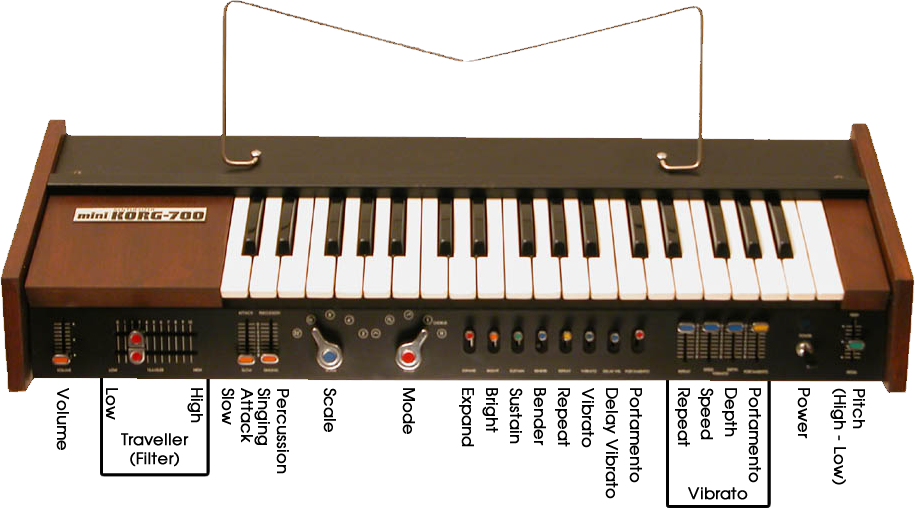

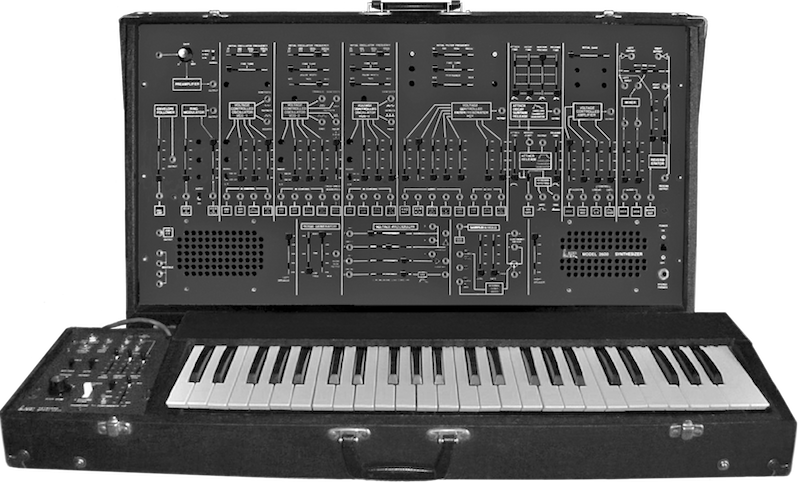
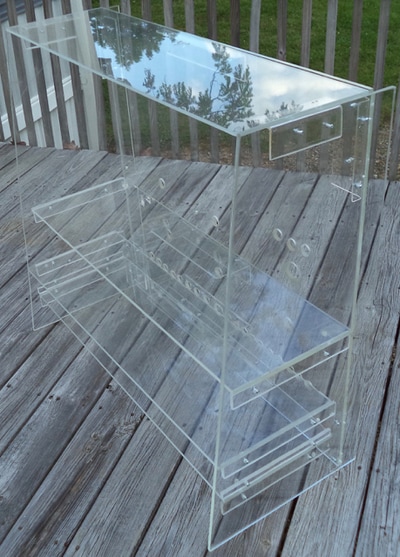
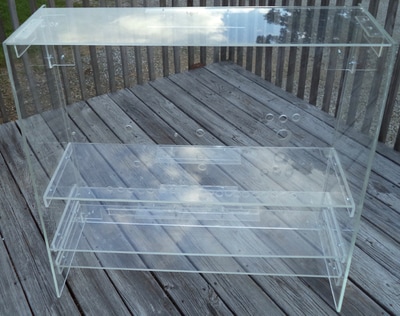
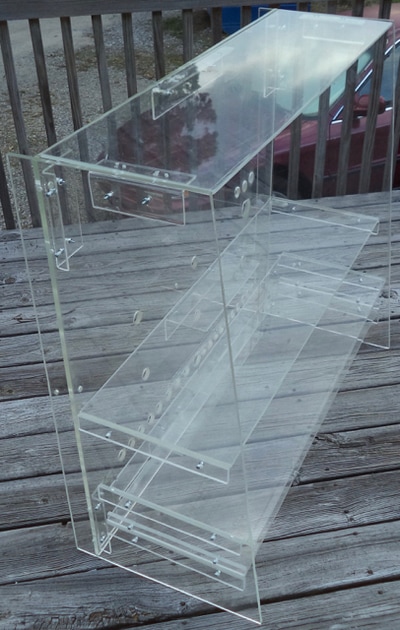
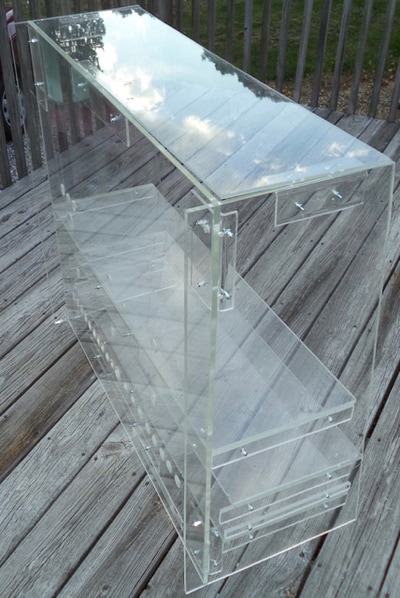
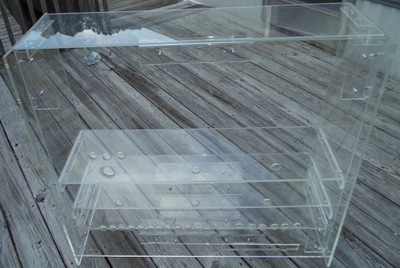

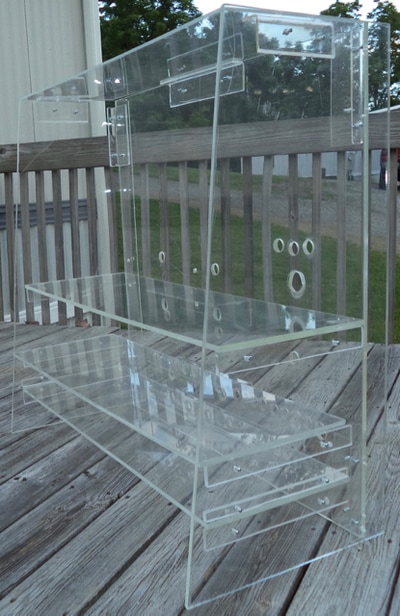
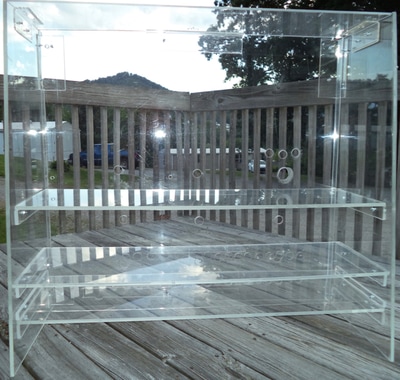
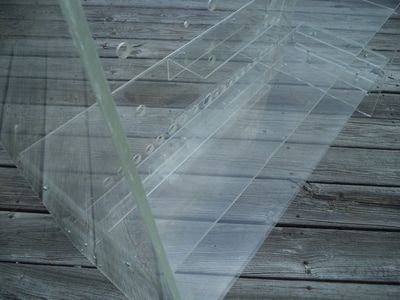
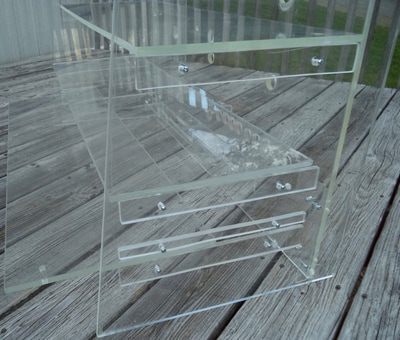
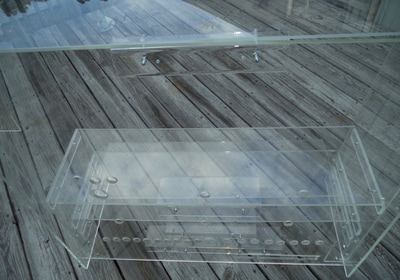
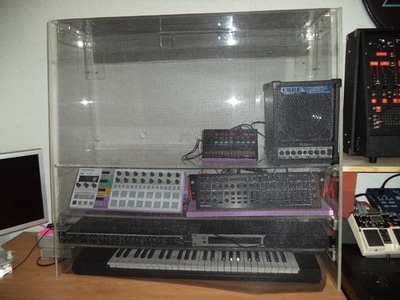
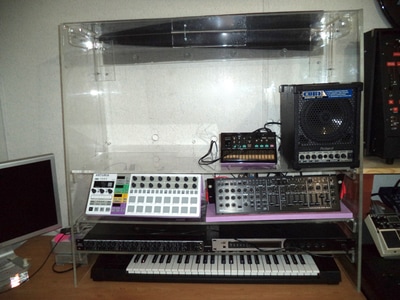
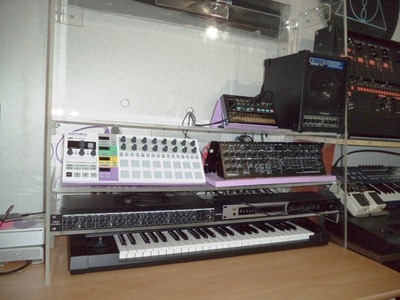

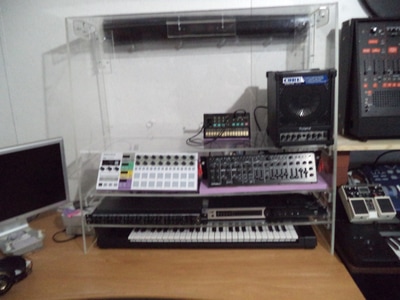
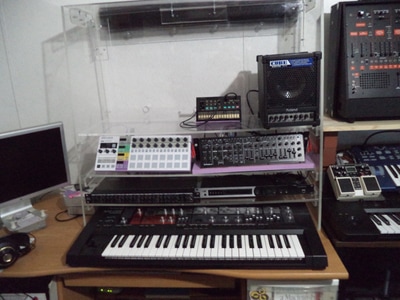
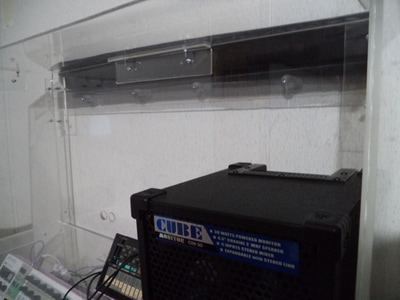
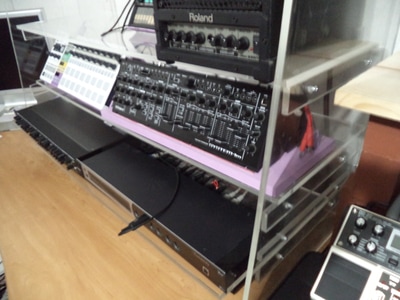
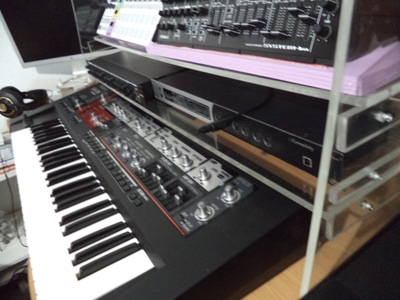
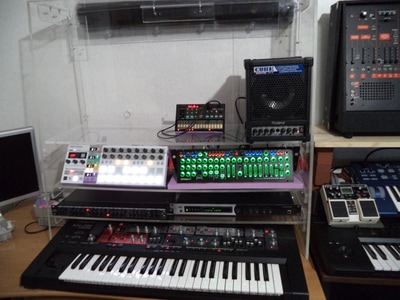
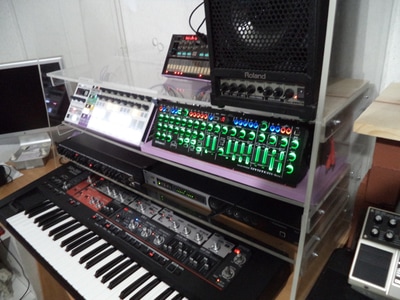
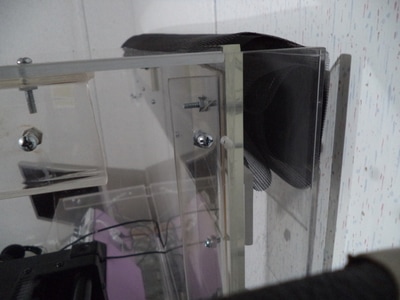
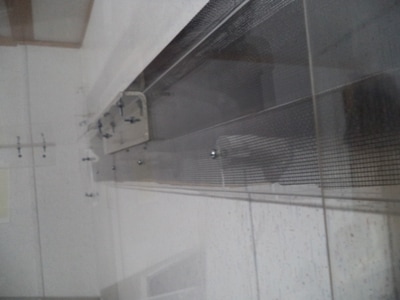
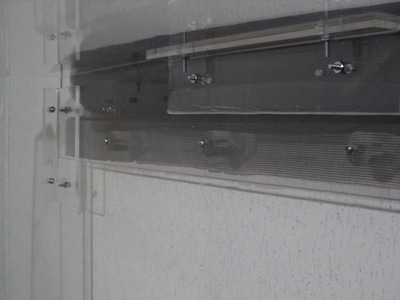
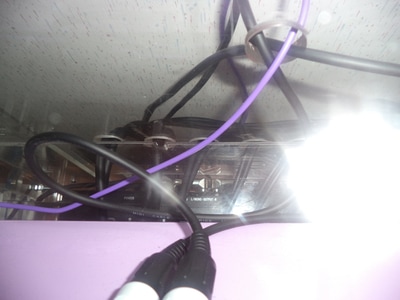
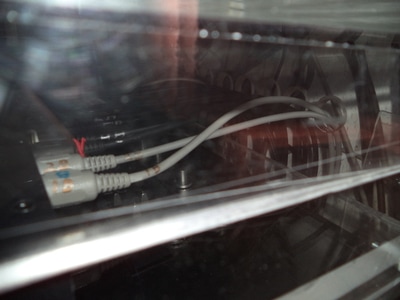
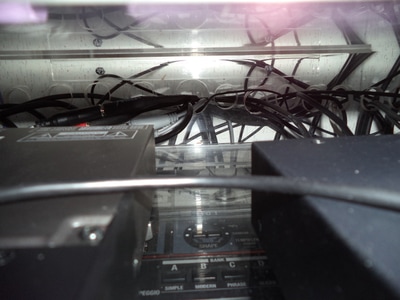
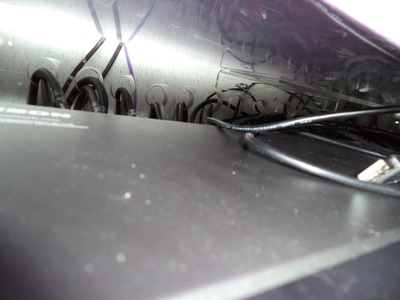
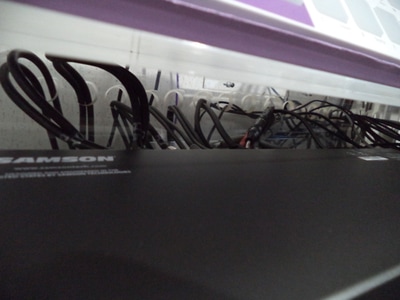
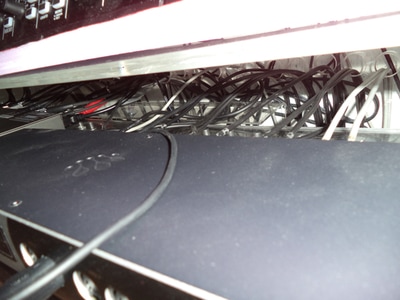
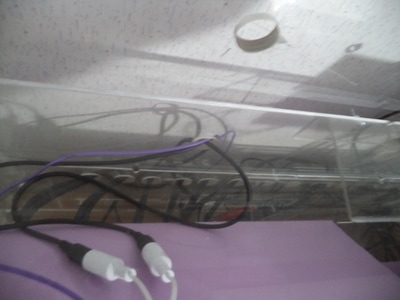
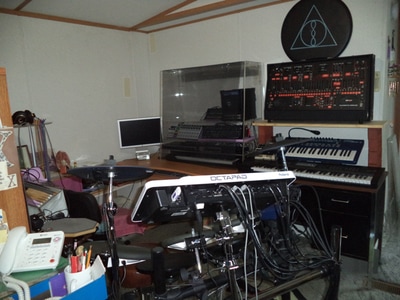
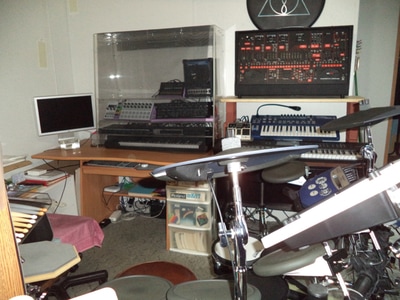
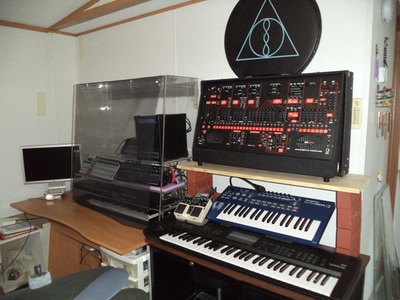
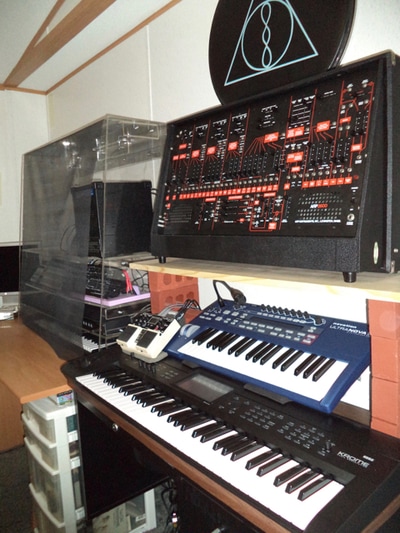
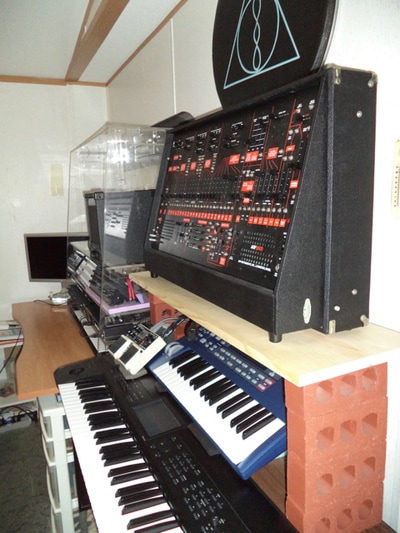
 RSS Feed
RSS Feed
